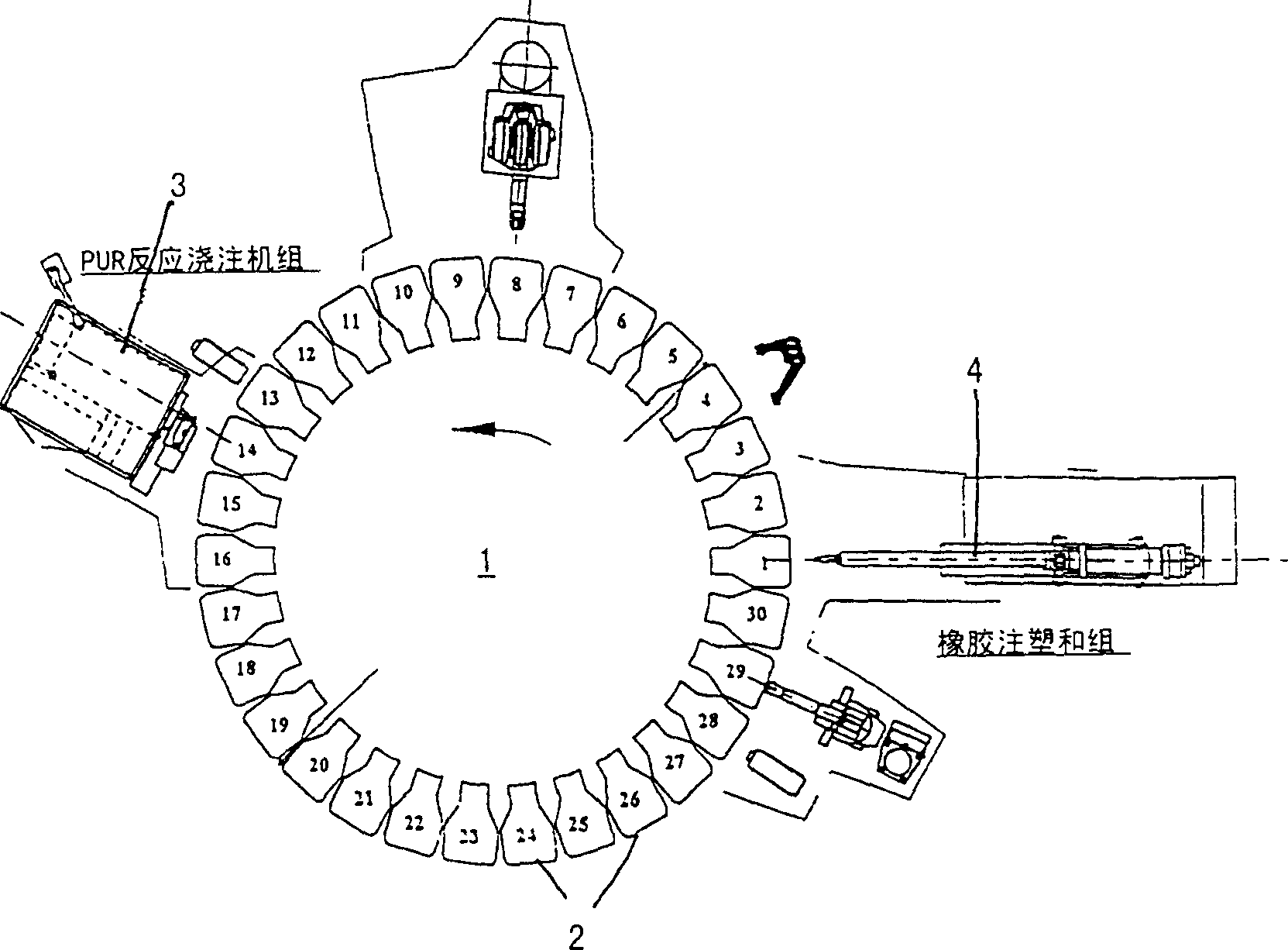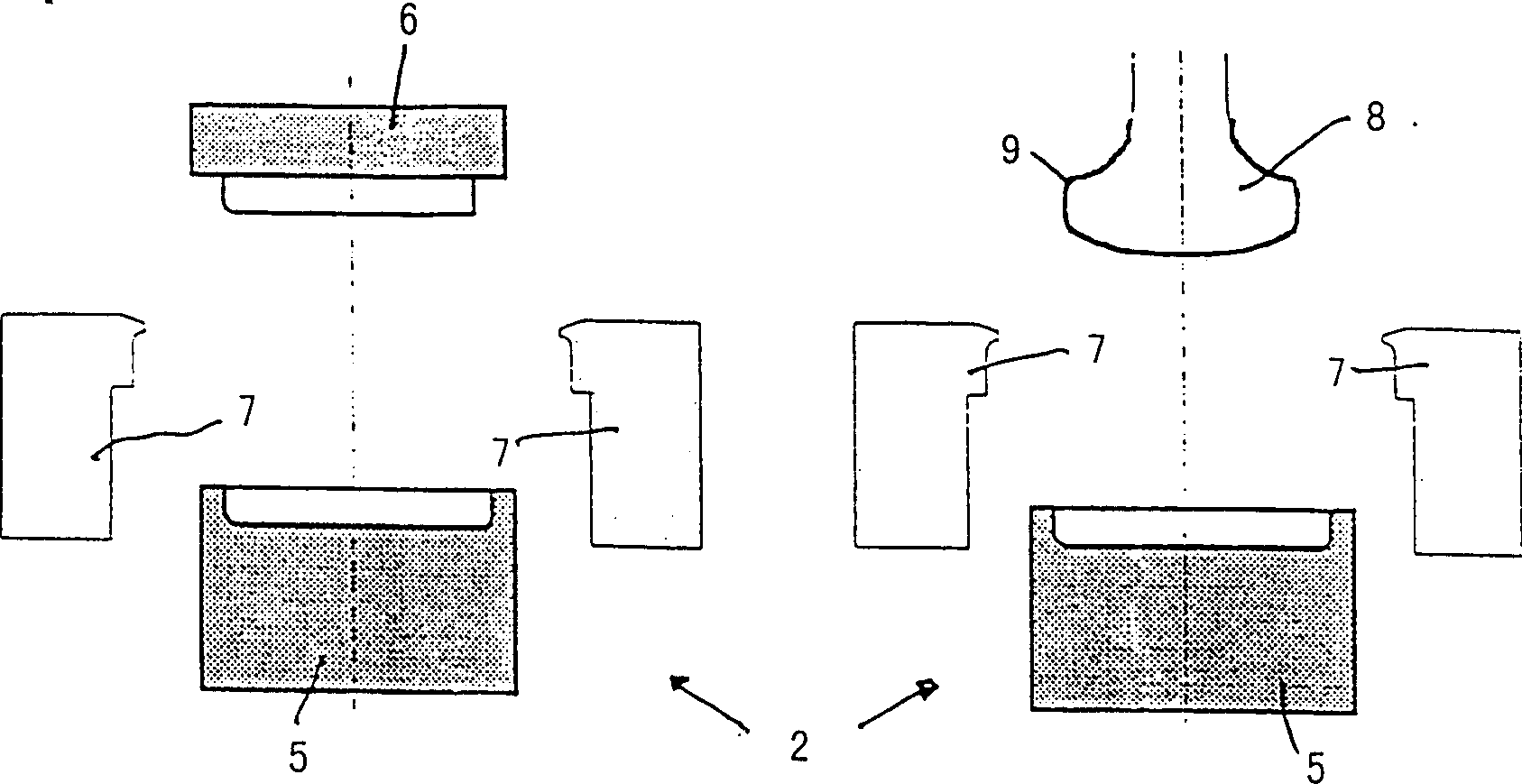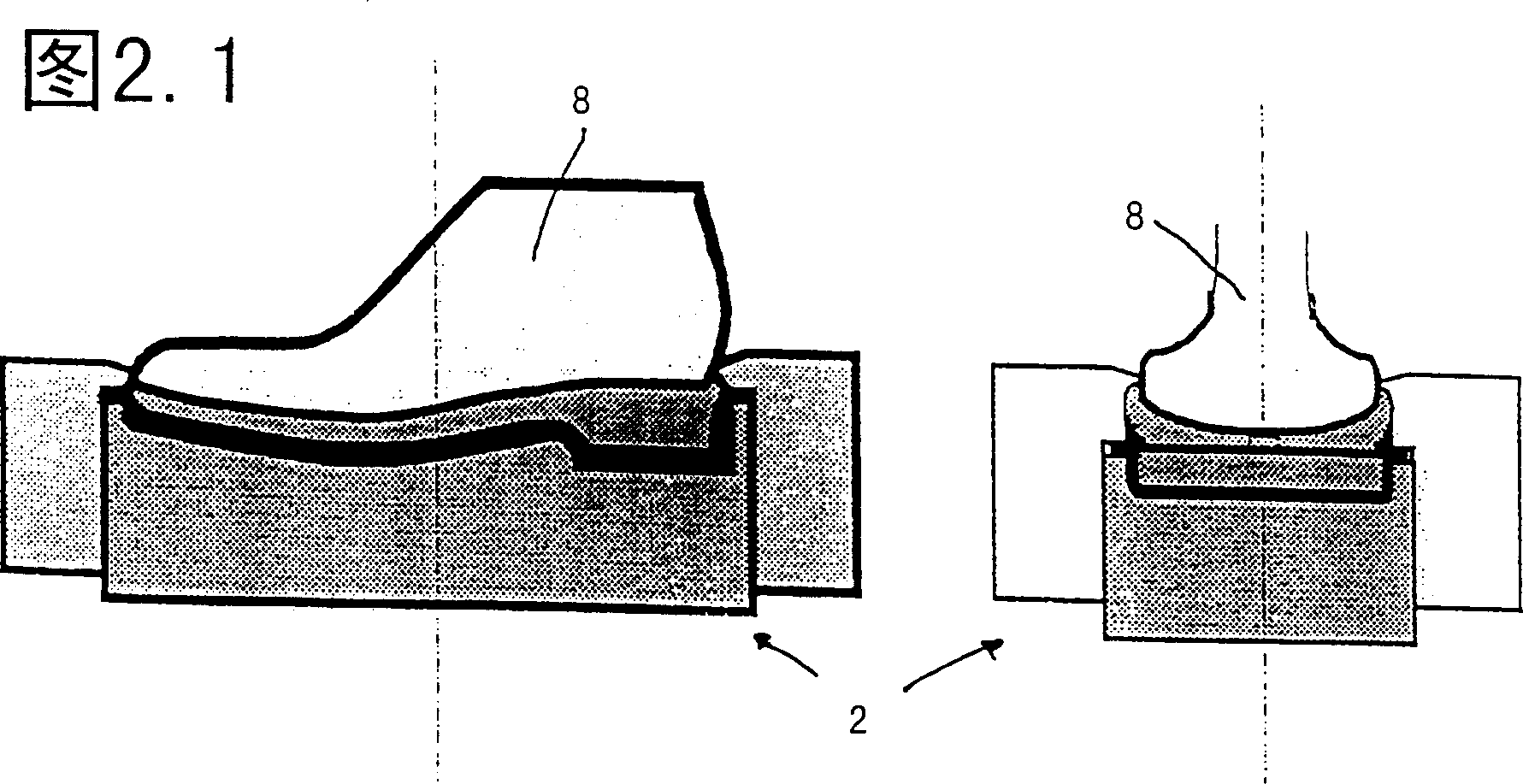Method for producing especially soles in mechanical shoes-production
A technology for machinery and shoe bottoms, applied in footwear, applications, household appliances, etc., can solve problems such as insufficient vulcanization, and achieve the effect of uniform temperature transfer and uniform vulcanization
- Summary
- Abstract
- Description
- Claims
- Application Information
AI Technical Summary
Problems solved by technology
Method used
Image
Examples
Embodiment Construction
[0051] exist figure 1Shown is a manufacturing plant for shoemaking, wherein in this example 30 forming stations 2 are arranged on a so-called round table 1, which will be explained in detail later.
[0052] On the round table 1, a polyurethane reactive casting unit 3 is arranged on the one hand and a rubber injection molding unit 4 is arranged on the other hand at a predetermined distance from each other. Forming station 2 rotates clockwise into the area of action of units 3 and 4, wherein a rubber outer sole is produced in mold 2 by means of rubber injection molding unit 4, and then, after mold 2 reaches polyurethane reactive casting unit 3 After the zone, the polyurethane midsole is produced in the mold on the rubber sole and at the same time the double sole is combined with an upper stretched on the last. Alternatively, only double-layer soles can also be produced with the aid of the device.
[0053] in the attached figure 2 A mold 2 is shown schematically in FIG. 2 ,...
PUM
 Login to View More
Login to View More Abstract
Description
Claims
Application Information
 Login to View More
Login to View More - R&D
- Intellectual Property
- Life Sciences
- Materials
- Tech Scout
- Unparalleled Data Quality
- Higher Quality Content
- 60% Fewer Hallucinations
Browse by: Latest US Patents, China's latest patents, Technical Efficacy Thesaurus, Application Domain, Technology Topic, Popular Technical Reports.
© 2025 PatSnap. All rights reserved.Legal|Privacy policy|Modern Slavery Act Transparency Statement|Sitemap|About US| Contact US: help@patsnap.com



